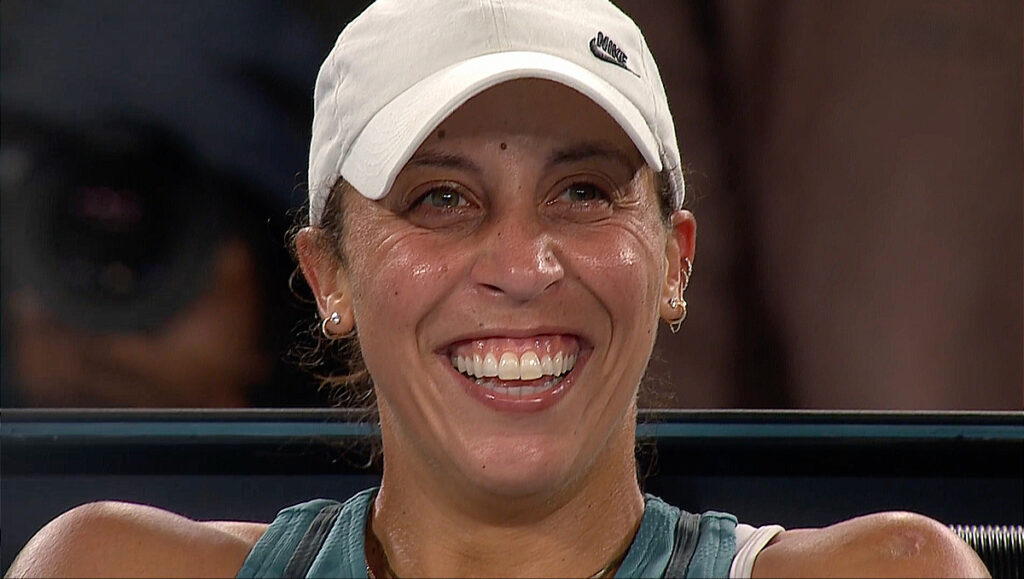
–
MELBOURNE, Australia – A career full of early promise, quick success, injuries and crushing disappointments culminated in glory Saturday night for American Madison Keys.
The 29-year-old seized the moment – preventing world No. 1 Aryna Sabalenka from sealing an Australian Open three-peat and, 7 1/2 years after her first and only Grand Slam final ended in tears, raised the Daphne Akhurst trophy to the skies with both joy and disbelief.
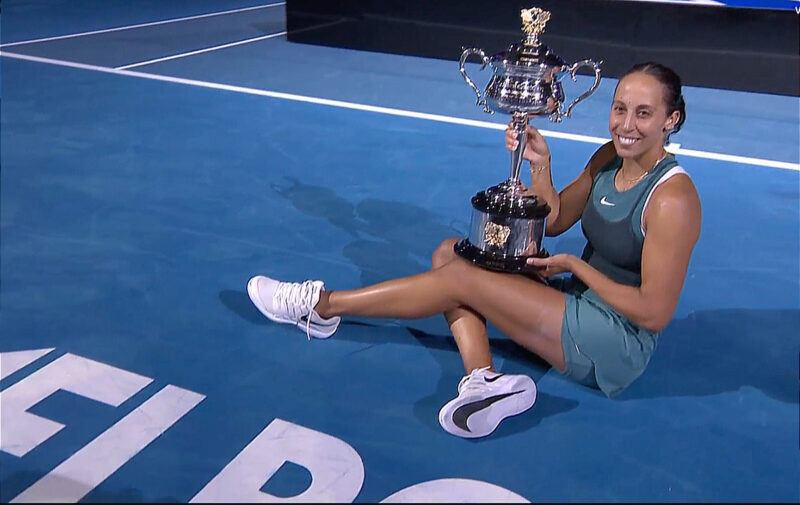
Keys didn’t just beat the world No. 1. She knocked off the world No. 2 and five-time major champion Iga Swiatek in the semis. And the experienced Elina Svitolina in the quarterfinals. And the 2022 Wimbledon champion Elena Rybakina in the fourth round. And former Australian Open finalist and world No. 11 Danielle Collins in the third round. All that, after barely eking out the win over qualifier Elena-Gabriela Ruse in the second round.
How did she do it?
Well, it’s … complicated.
There have been bits and pieces in various places about why and how Keys finally accomplished what most had predicted for her long ago. But it’s so much more complex than just the change of racquet from Wilson to Yonex that many are touting as the catalyst.
People love quick, neat, linear storylines, and the racquet provides that.
But the reinvention of Madison Keys is not just one thing. It’s so many things. It’s everything.
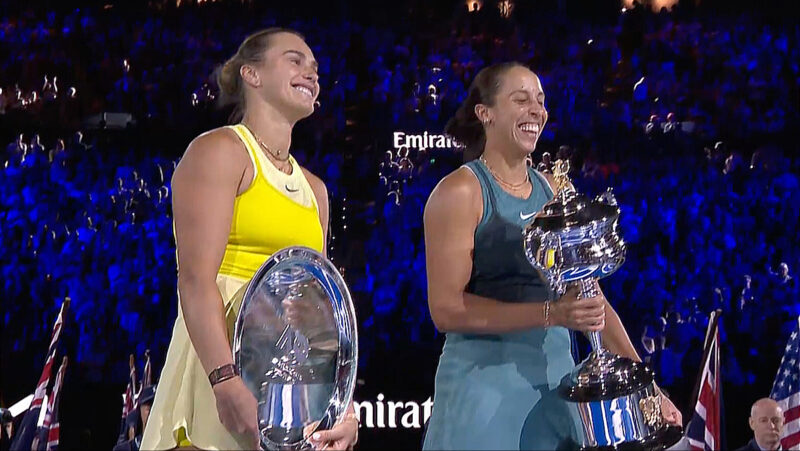
After a year of injuries, self-doubt and frustrations – and with her 30th birthday approaching – Keys finally got to the tipping point last year.
The American has been through plenty of coaches in her career. Most of them have been quality people. There is probably little she has changed in the last year that someone didn’t already suggest or advise somewhere along the way.
But now she was beginning to listen, willing to be less stubborn, willing to step out of her comfort zone and be unafraid to fail. And perhaps some of that was that much of the impetus came from new husband Bjorn Fratangelo – the person she loves most in the world, trusts more than anyone, and who happens to know what he’s talking about, as well.
And she didn’t fail. She triumphed.
That’s everything.
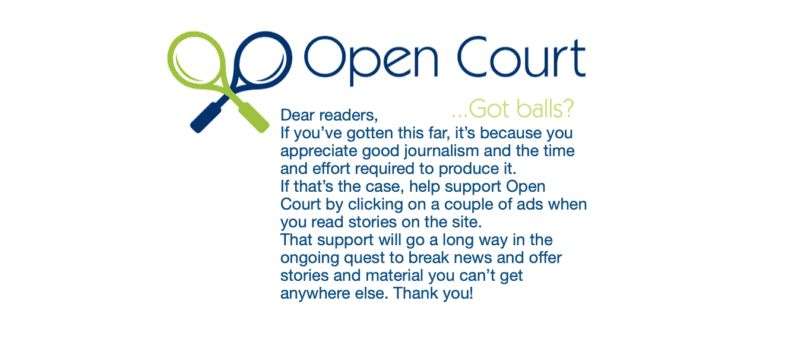
An unexpectedly early start
Keys was only scheduled to begin her 2025 season in Adelaide – just one tuneup event before the big one as she continued to incorporate and finetune all the changes in her game.
But then, after Bianca Andreescu withdrew from Auckland – which was struggling with a dearth of name players as even defending champion Coco Gauff opted for United Cup – the tournament director put on the hard sell.
And she agreed.
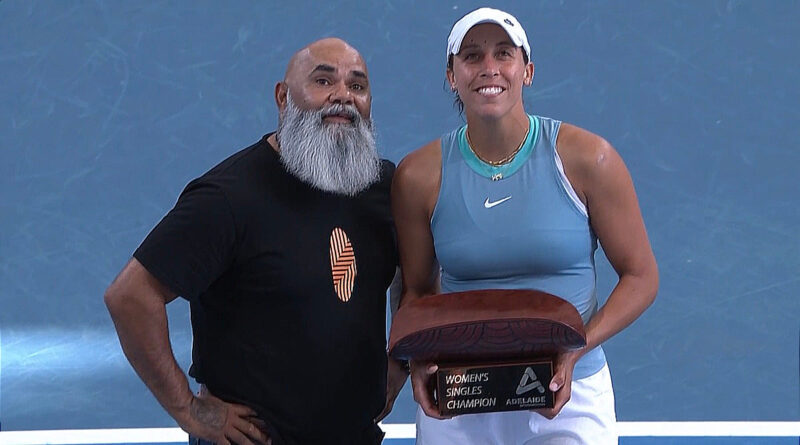
Keys didn’t win it; she lost to Clara Tauson in the quarterfinals. But she had three matches under her belt when she headed to Adelaide, with Beatriz Haddad Maia, Jelena Ostapenko and Daria Kasatkina – all ranked higher than she – to be faced in the first three rounds.
Had she not had those reps, maybe she wouldn’t have gotten through the week and won the title there.
And then maybe the entire Melbourne journey might have been different.
Equipment changes
The switch from Wilson to Yonex was partly the racquet, which obviously feels good in her hand. But it was also a change in string pattern – one she took a preliminary step with last year while she was still under contract to Wilson.
Most of the questions to Keys this tournament have been about the racquet change, to what looks to be an EZone 98 with a 16X19 stringbed.
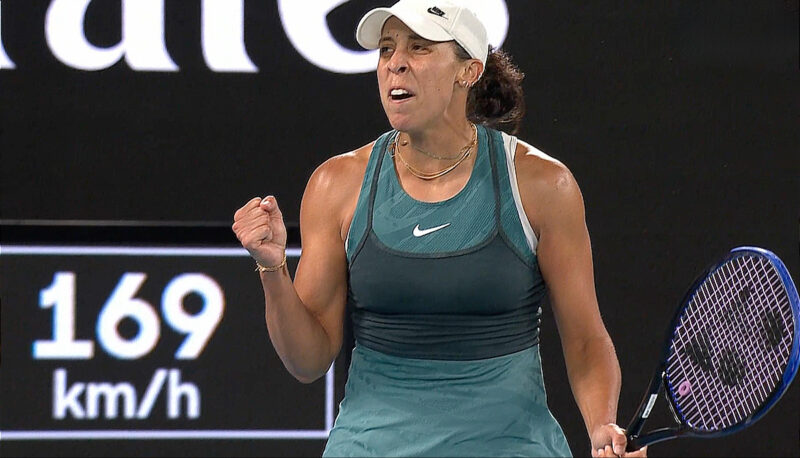
But the bigger change might well have been a willingness to finally abandon the gut string that was once, long ago, the string of choice for pros and those who could afford it. But the wave towards hybrid and poly strings began a long, long time ago. And Keys resisted it all this time.
As with most equipment changes these days – even at the amateur level – it’s become far more about the strings than the racquets.
Technical changes
The biggest change has been with the serve, which Keys has morphed from a platform position to a step-up position.
Her increase in mph during the tournament, as compared to her average in 2024, is significant. But there are other pluses to it – notably the stress it may off her shoulder (which caused her to miss the Australian Open in 2024) and her left thigh (perpetually wrapped since she was a junior).
“I’m actually very proud of myself for my serve. I feel like I kind of changed it kicking and screaming a little bit just because it was always something that worked well enough, so why mess with it? But then my body slowly started to fall apart a little bit with it, so that was kind of the final nail in the coffin where I had to actually make a change,” Keys said earlier in the tournament.
“But being able to change something that’s such a big part of my game and also do it in a two-part way and just -– I mean, I spent basically all of Beijing and all of Wuhan so uncomfortable, just because it wasn’t the end game but it wasn’t what I wanted it to be, either. So just really trying to buy into that process took a little bit of patience.”
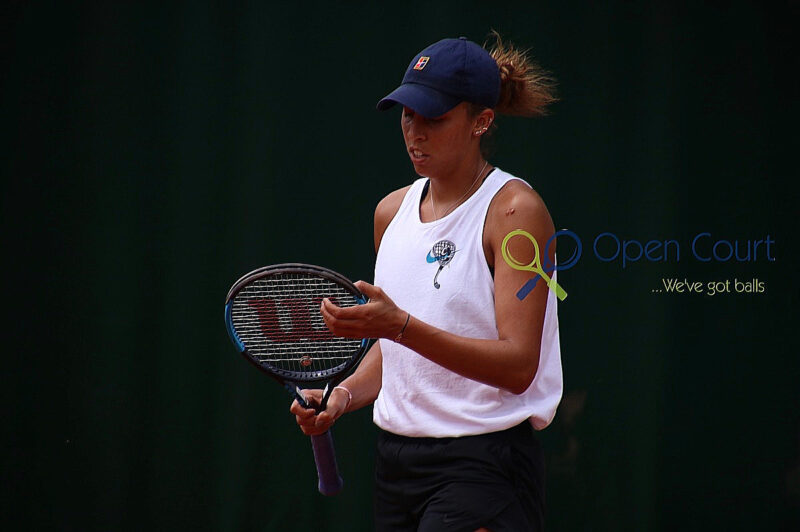
Getting older, staying current
It didn’t escape Keys’ notice that, compared to a decade ago when she made her first Australian Open semifinal as a youngster, the average level of velocity on opponents’ groundstrokes has increased a fair bit. And it was taking a toll on Keys’ body.
“It just got to the point where it was, like, ‘Okay, if I really want to stay competitive, I have to do something different’, because my body is breaking down a little bit more. I feel like everyone is catching up ball speed-wise. I can’t just hit people off the court every single match anymore,” she said. “Then I think it was once I made one change, I got more comfortable with it. I was literally, like, the same for so long that the thought of any change was pretty scary for me. I just didn’t want to do it because I felt like I was always so close to figuring it out that I would just figure it out.”
After the first change, the floodgates kind of opened. And Keys’ mindset towards those changes became one of looking at the best outcome, not the past. “I hate to admit it, but I had to say Bjorn was right a lot,” she laughed.
The full tool kit – unleashed
As Keys said, her basic game plan had been to hit people off the court.
It was fine – when it worked. But when she wasn’t feeling the ball, the unforced errors piled up and so did the losses.
The irony of it all is that Keys was a very well-taught tennis player. She has all the shots, and she hits them with solid technique. That includes the volley and the slice backhand. And yet, she hardly used them.

The difference Down Under has been a willingness, when she was on the run or not in a good position to unleash a big groundstroke, to slice the ball back – just get it back in play and try to get the point back to neutral – and wait for another opportunity. Before, she would swing from the fences even when she was in those poor positions – which led to the errors, which led to a dip in confidence and belief.
The Keys we saw in Melbourne so rarely appeared rushed. And the funny thing was that even though she didn’t “appear” to be swinging nearly as hard as she used to, the result was the same or better.
The Bjorn factor
Bjorn Fratangelo, Keys’ longtime significant other and since November, her husband, says he never really wanted to be her coach.
When he was wrapping up his own playing career, there started to be more dialogue about her tennis. And then when he agreed to start coaching and travelling with her, it got more existential.
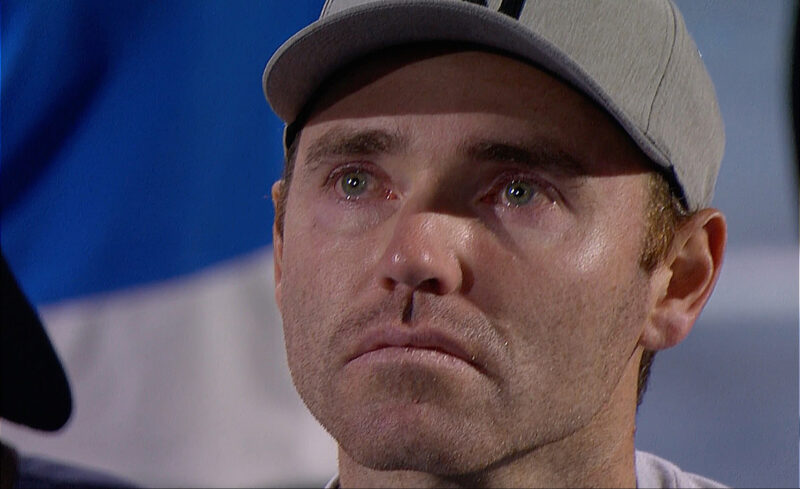
“How much do you want to get out of this? Are you happy with staying 11 through 25? Do you want try to push for more? What do you want? You’re almost 30 years old,” he said, in a press conference before the final. “I think she’s nowhere near her full potential, but just staying the same way and, let’s say, I don’t know, sharpening the axe can get you so far, but sometimes you just need new tools. I think that’s what I’ve tried to bring to the table.”
The two had very different paths to pro tennis. Keys, from her early teens when she already signed with behemoth agency IMG and the sponsorship money started pouring in, was always “expected” to do big things.
Fratangelo was a late bloomer, and everything he achieved in tennis, he had to earn without having much of the road paved quite as smoothly. “I had people from all walks of life in tennis and coaching telling my parents, ‘Yeah, look, he’s small. He’s a chunky little kid. He’s slow. He’s probably not going to make it’. Then I just bloomed at 16, 17 years old, and I got a lot better and left some kids behind, and obviously had that junior success that I did at the tail end of my junior career,” he said.
“But I don’t know what that pressure is like of people telling you at 14 years old, ‘Hey, you’re going to have Grand Slam titles when you’re 21, 22, you’re going to have multiple’. Nobody has a crystal ball. You don’t know that. I can’t imagine what that pressure is going to be like. Thank God, I didn’t have it, honestly.”
The pressure of prodigy
Keys didn’t only had the outside pressure of “living up” to her teenage promise. She took that pressure on herself. She began asking herself WHY it wasn’t happening. She was not unaware of all the sacrifices her family had made for her tennis.
But she wasn’t able to come up with solutions on her own – and, perhaps, wasn’t willing to risk all that she HAD accomplished in her career to jump into the abyss of the uncertain.
“From a pretty young age, I felt like if I never won a Grand Slam, then I wouldn’t have lived up to what people thought I should have been. That was a pretty heavy burden to kind of carry around,” Keys said. “So I finally got to the point where I was proud of myself and proud of my career, with or without a Grand Slam. I finally got to the point where I was okay if it didn’t happen. I didn’t need it to feel like I had a good career.”
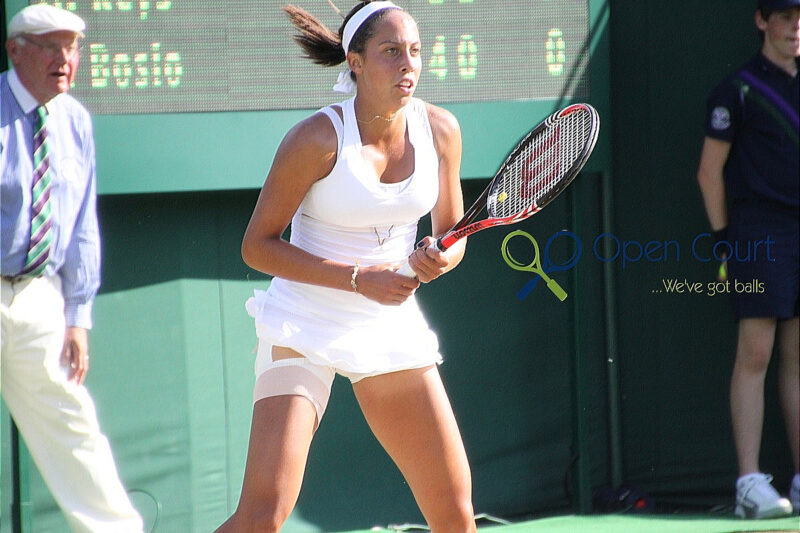
Fratangelo also didn’t have the same level of talent as his bride. And that brings a different perspective. And there might always have been a coach inside there, waiting to come out.
“I was very observant as a player of other people, other teams, how they did stuff. I feel like now I’m pretty observant on the other end of it as well, looking at coaches,” he said.
And, he added, what he doesn’t know, he’s not afraid to ask.
Working on the person, not the player
Keys had sought plenty of professional help on the mental side during her career.
But most of it was on the sports psychology side – how to play better tennis matches. That’s the route most players go. But Keys eventually realized that working on herself as a person would lead to good things in her working life.
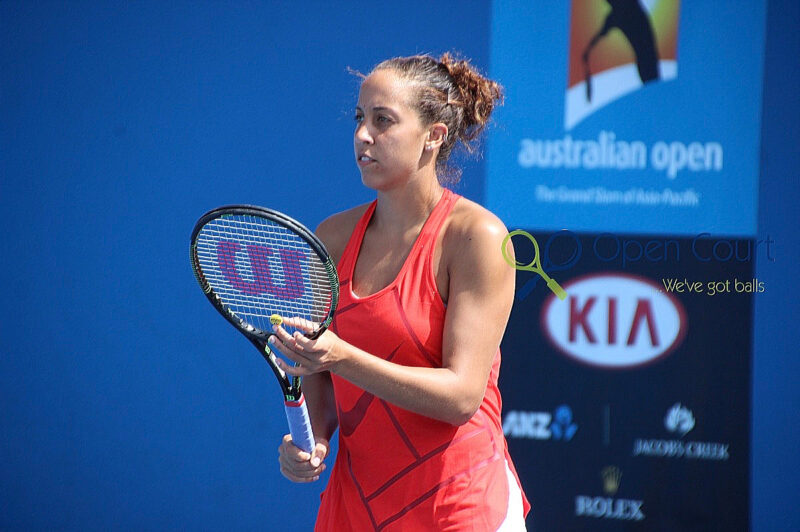
“Lots of therapy. I really kind of bought into it. I think in the past I had always kind of tried to go the sports therapy route where it was more about routine and controlling things you can control and all of that. I felt like I was always good enough at that, but to really start kind of digging in on how I felt about myself and really being honest with myself about it, it was really hard because I didn’t really want to be the person that felt like I was really struggling, but I was starting to really struggle with it,” she said.
“So just being really honest and actually getting help and actually talking to someone, and not just about tennis but about how I felt about myself. Again, very uncomfortable. I never really like to be uncomfortable,” she added, smiling. “Honestly think that had I not done that, then I wouldn’t be sitting here.”
Make no mistake, Keys has been winning superbly at life. She has had a long term, supportive, nurturing relationship with a thoroughly good man for nearly eight years, culminating in their marriage last November. This is a huge accomplishment on its own, in the universe in which Keys operates.
She has longstanding, deep friendships with her rivals. She has long been an advocate for kindness, and girl power, with her involvement in the “Fearlessly Girl” and “Kindness Wins” charities.
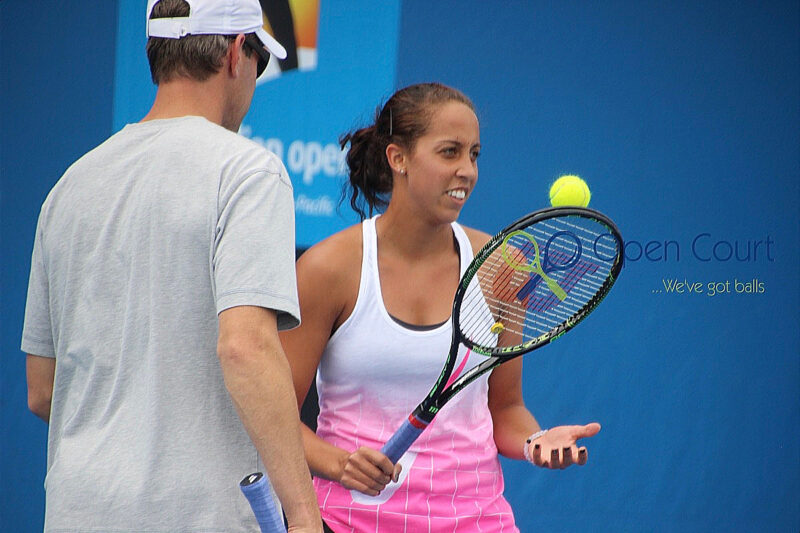
Perhaps, with age comes wisdom. And in the big picture, that a Grand Slam title is only icing on an already rich cake is a realization that takes time to come to.
Maybe, earlier on in her career and life, she wasn’t ready to change, wasn’t ready to win a major, wasn’t ready to be the very best she could be. It’s a lot easier to settle for “pretty damn good” than risk what you need to risk to become great.
So, maybe, this maiden Grand Slam title isn’t an “it’s about time” thing as much as it is an “in her own time” thing.
And, just like that, Madison Keys back into the top 10, tying her previous career best of No. 7. A game-changer.
And, as Fratangelo accurately pointed out, she can still get better.
“I think it’s just like I’ve always said, you have all these tools to use, but you’ve just got to know which ones to use at which times. And I think she’s starting to understand what to do in what moments. And I think there’s a lot of room for improvement, and that’s the scary part, in my opinion,” he said. “To do it at 29, almost 30 years old now, I think is pretty cool as well. It shows that your career doesn’t have to end. You can always look to improve, and that’s what the greats do.”

More Stories
ATP Rankings Report – As of Oct. 20, 2025
WTA Rankings Report – As of Oct. 20, 2025
What a week for the Canuckians